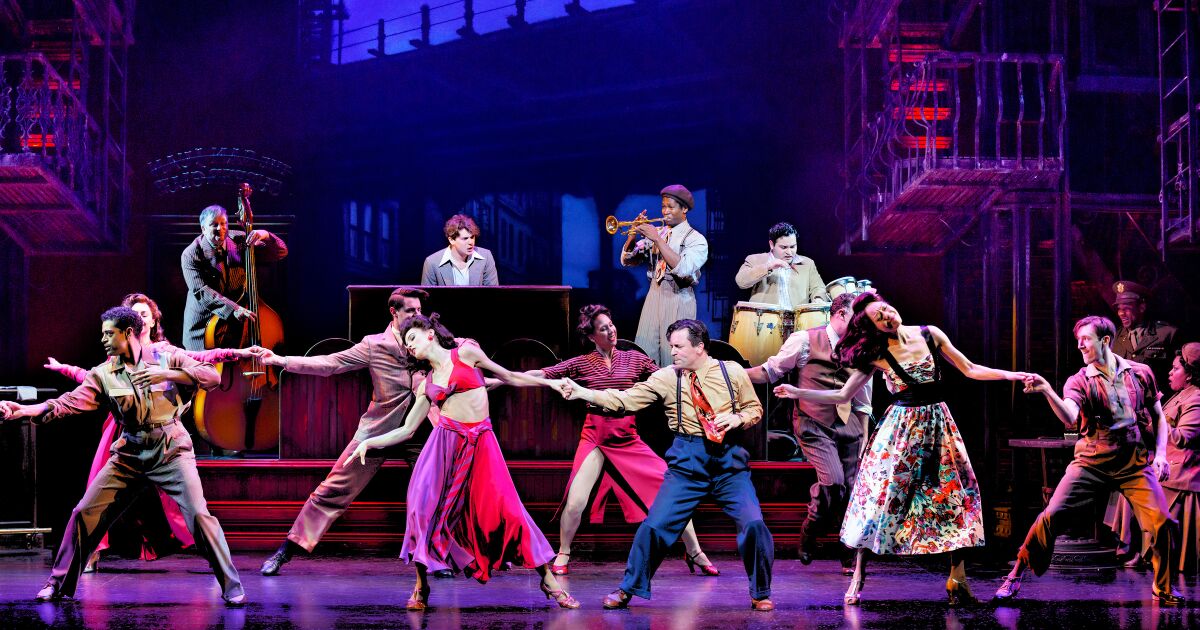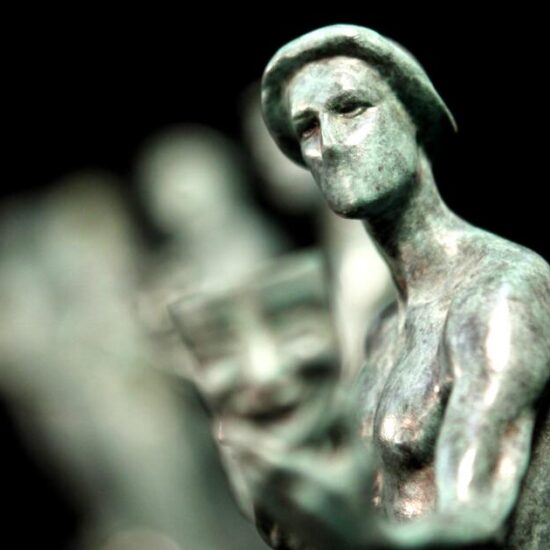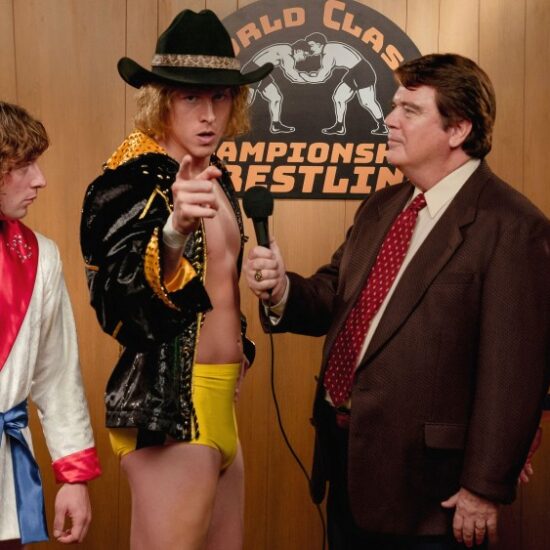
“New York, New York,” a stage musical loosely based on Martin Scorsese’s 1977 film starring Robert De Niro and Liza Minnelli, is the latest tourist shop to set up business in the theater district.
The show, which had its official Broadway opening Wednesday at the St. James Theatre, is meant to be a love letter to the city that never sleeps. Could that be why the musical is so exhausting?
The movie is unendurable in a different way. Scorsese focuses the camera on De Niro and Minnelli and lets them act in the hope that some semblance of character and story will eventually emerge. It’s like a French New Wave film performed as a Method acting exercise, with musical interludes to alleviate the monotony.
Of course most people when they hear the title think of the movie’s theme song, a Kander and Ebb classic written for Minnelli as the cinematic equivalent of an 11 o’clock number. Frank Sinatra later turned this ditty into the city’s anthem — making it inescapable for Kander, who still doesn’t get why everyone loves it so much.
The song — which is teased at various points in the show — is given quite the liftoff at the end. Director and choreographer Susan Stroman, a five-time Tony Award winner, pulls out all the stops in a finale that has the band rising from the pit on what looks like a giant Santa Claus sled. The audience drools on Pavlovian reflex. But it’s an orgasm that takes so long to achieve that many theatergoers will be sleepwalking through it.
Composer John Kander and lyricist Fred Ebb, the storied Broadway songwriting duo behind such shows as “Cabaret” and “Chicago,” wrote a handful of songs for the film, including “But the World Goes ‘Round.” Kander is still going strong at 96, but Ebb died in 2004, leaving Kander to furnish the musical with a score from many sources. There are songs Kander wrote by himself, trunk songs from the Kander and Ebb catalog and new tunes that Kander collaborated on with Lin-Manuel Miranda serving as lyricist.
The show is so awash in music that I felt as if I were bobbing in a sea of redundant Broadway refrains. The numbers are protracted by Stroman’s strenuously energetic choreography, which seems to give every dance sequence the hard sell in triplicate. When imagination fails her, she has an ensemble member twirl from one end of the stage to the other. Indeed, there’s so much twirling that the producers might consider a program insert warning theatergoers about the possibility of vertigo.
Anna Uzele and Colton Ryan in the Broadway premiere of “New York, New York.”
(Paul Kolnik)
But it’s not fair to pin the blame on Stroman, who is merely trying to cover up the emptiness at the heart of the musical. The book written by David Thompson with Sharon Washington maintains the film’s immediate post-World War II jubilance but jettisons much of the plot that was specific to De Niro and Minnelli. What’s left is a void of good intentions.
The stage version is more inclusive of New York humanity, but the story still isn’t adequately fleshed out. In a series of scenarios that might easily be mistaken as a pretext for musical variety, the characters are defined not so much by their personalities but by their professional aspirations and demographics.
In the movie, De Niro and Minnelli are observed under the emotional magnifying glass of the camera. In the musical, Colton Ryan and Anna Uzele, too busy singing and dancing, haven’t the time or the breath to bother with subtext.
Ryan plays Jimmy Doyle, a jazz musician of Irish background who’s mourning the death of his brother in the war. He drinks to deal with his grief and when he drinks he gets into fights. But he’s not as emotionally twisted and manipulative as De Niro’s version of the character.
Uzele plays Francine Evans, a Black chanteuse with an almighty voice who has been entertaining with the USO and now is looking for work in New York. Practical-minded and clear-eyed, she knows the racist obstacles she faces on the path to stardom.
Ryan is the piano player at an audition for a job that Francine doesn’t get. (“Come back when you’re a blond,” she’s told.) He’s awe-struck by her talent and furious at the manager for not hiring her on the spot. He quits and when they’re both outside asks her out to dinner.
The invitation is instantly rebuffed. “For starters, you’re — Irish. No offense. No Irish. Your people and my people? Oil and water,” she explains.
Jimmy’s buddy Tommy Caggiano (Clyde Alves) takes it from there: “Listen, New York City is the greatest social experiment ever. Everybody lives here. And everybody’s natural enemy lives here. And we manage not to kill each other. For the most part.”
An interracial relationship is born — no matter that the characters don’t have much in common beyond their love of music. It wasn’t always clear what Jimmy and Francine saw in each other in the movie. Here, the characters are more sympathetic. But the lack of genuine chemistry makes it hard to invest in a love affair that seems more or less random.
The way Miranda romanticizes Washington Heights in his Tony-winning musical “In the Heights” is nothing compared to the way “New York, New York” sentimentalizes the entire island of Manhattan. This is a postcard view of the melting pot, scrubbed of historical specifics.
The other characters are treated as types. There’s Alex Mann (Oliver Prose), a young violin-obsessed European refugee who wants to take lessons from the once-renowned Madame Veltri (Emily Skinner). Mateo Diaz (Angel Sigala), a young Cuban drummer, chases his musical dream in the hope of rescuing his abused mother. Jesse Webb (John Clay III), a Black trumpeter who fought in war but is now stuck working in a kitchen, is determined to test this new era of American possibility.
What unites this group is a passion for music, a desire for money and a longing for love, a set of aspirations that are laid out in the number “Major Chord.” Hitting the jackpot with all three might seem too much to ask, but Jimmy is determined to have it all. (No matter how long he may have to filibuster about it in song.)
Ryan’s Jimmy sings in a caricatured big-band style that’s like Bing Crosby with marbles in his mouth. Uzele’s Francine makes every song a somewhat monotonous Broadway showstopper. I found myself rooting for their romance, but it’s hard to lose sight of the performers when their characters are no more than fig leaves.
The production design turns the stage into a storybook version of New York, where tenement fire escapes provide an ideal perch for marveling at urban sunsets. The fake poetry of it all becomes cloying, even for a native New Yorker who has sentimental leanings in this direction.
Stroman works hard to seduce us. She’s trying to solve dramatic problems with propulsive tableaux. But song and story are only tenuously tethered. As a result, the Broadway showmanship grows wearing.
In “Wine and Peaches,” company members are tap-dancing perilously on a skyscraper construction site. The choreography is breathtaking, but the number seems airlifted from another New York revue. Tourists may be wowed, but they deserve more integrated artistry from Broadway.












